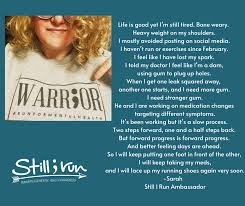Injuries can be a devastating setback, particularly when you have an ambitious race planned. They may even spark depression and suicidal thoughts in some people.
Though running injuries can be a painful experience, recovery is possible. To maximize your mental well-being and speed up the healing process, consult with a physiotherapist and physical therapist for guidance.
Talk to a Psychiatrist
A psychiatrist is an expert in mental health and can offer guidance on how to cope with your injuries. They may also prescribe medications to help manage symptoms and enhance quality of life.
Before visiting a psychiatrist for the first time, be sure to do your due diligence and research reviews online. Speak with past patients to get an idea of their personality traits.
Psychologists offer a range of specialties, so it’s essential to find one that meets your requirements. You don’t want to end up with a doctor who cannot comprehend your issues or administers inadequate treatment.
A good psychiatrist is a trusted confidante and partner in your recovery from mental illness. However, for this relationship to succeed, both of you must be on board and open with each other about thoughts, feelings, and emotions. To schedule an appointment with our team of specialists, visit our contact page.
Stay Active
No matter the cause of your injury or need for a break from running, being sidelined can have an adverse effect on your mental health. But if you keep up with social activities, practice healthy habits and eat nutritiously during this period, it will help keep you mentally strong and help ward off depression.
You can also reach out to those in your support network and share how you’re feeling. They may be an excellent source of encouragement and understanding, especially if they have experienced similar injuries before.
Many people prioritize physical activity in their social lives, whether that means joining a running group, hitting the weights at the gym, playing sports with friends or taking yoga classes. For those experiencing foot and ankle pain, we offer specialized physical therapy for runners.
Injuries can disrupt our habits, leading to loneliness or depression. But having a network of supportive friends and family around us can help prevent that from occurring. Visit our home page to learn more about our services.
Stay Positive
No matter the severity of your hamstring or knee injury, staying positive is paramount to recovery. Studies have repeatedly demonstrated that having a positive outlook can help you heal faster and get back to running sooner.
Running can become demotivated when they must take a break from their usual training regimen, especially if they are close to reaching goals they had before the injury. While accepting that your original goals may not be reached is difficult, setting new realistic and achievable objectives will help keep motivation levels high.
You can always enlist the support of friends and family, even if they aren’t runners. Find someone in similar circumstances and ask them how they managed to stay motivated and positive while healing from their injury. This could include reading a book, watching a movie, going to the gym or taking up an exciting new hobby.
Stay Motivated
Running injuries can be discouraging, but it’s essential to stay motivated. If you’re feeling down about being injured, try distracting yourself with activities that make you feel good.
Supportive friends and family can be an uplifting source of motivation during recovery. Talking to someone who understands your situation helps put things into perspective, especially if they’ve gone through similar experiences.
Remember, your body is healing and it may take some time before you are able to resume running. While there may be setbacks along the way, know that these are part of a normal recovery process and things will improve with time. In the meantime, you can explore our sports rehabilitation services to help you recover faster.
While you’re recovering, it’s wise to switch up your workout routine. Varying mileage, intensity and surfaces can help avoid overuse injuries. Plus, this is an ideal time to incorporate other exercises that will aid in recovery such as weight training or core strengthening into the mix.


